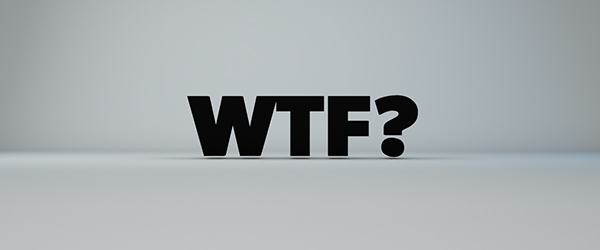
Concerns about how Facebook’s news feed algorithm values actual news stories and Twitter’s plan to organize tweets algorithmically have ignited talks about the “filter bubble” and its effects on publishers and readers.
@UnseeingEyes The Web has turned into an enormous filter bubble…You have to keep searching more all the time 2 find valid outside views
— Mike Barr (@maxnrgmike) September 16, 2014
But what, you ask, is the filter bubble, and why should publishers (and others) be wary of it? All will be explained.
What is a filter bubble?
The filter bubble is created when a large group of people get most of their information from personalized new delivery platforms such as Google News, Facebook’s news feed and, to a lesser extent, Twitter. People who rely on these platforms for their media consumption are at risk of only being served stories that pander to, and thus reaffirm, their pre-existing worldviews. The term was coined in 2011 by Eli Pariser, now CEO of Upworthy, in his book “The Filter Bubble.”
While the filter bubble is a relatively new expression, the phenomenon it describes is as old as media itself. Fox News and MSNBC, for example, have long catered to their core viewerships at opposite ends of the ideological spectrum. The filter bubble is similar but applied to algorithms instead of publishers and editors.
Who are the big culprits here?
Facebook and Google are frequently cited as most responsible for the filter bubble. Facebook has refuted that claim, but it was hard not to suspect something was awry last month when Facebook news feeds became clogged with updates about the Ice Bucket Challenge when there were so many other more serious viral news stories in the world.
John Battelle, co-founder of NewCo, argued that Facebook’s new commitment to featuring “high quality content” in news feed could actually be an antidote to this filter bubble problem. But Twitter’s own plan to introduce an algorithmic feed in 2015, however, could further inflate the filter bubble there.
Some argue Twitter users are already in their own kind of filter bubble: By only seeing tweets from people they have chosen to follow, Twitter users are in a “social echo chamber,” according to Jarno Koponen, co-founder of media discovery app Random.
Teal Newland, vp of global revenue and marketing at StumbleUpon, said recommendation widgets like Outbrain and Taboola also contribute to the filter bubble by only driving traffic to already-popular stories with sensationalist headlines.
OK, so what’s so bad about all of this anyway?
Arguments against the filter bubble stem from the idea that the Internet should do away with media gatekeepers, not create them.
In a December 2010 essay in Scientific American, Web pioneer Tim Berners-Lee said that the feedback loops of social platforms threatened the Web’s democratic ideals. “The more this kind of architecture gains widespread use, the more the Web becomes fragmented,” he wrote. “And the less we enjoy a single, universal information space.”
Fast forward four years, and publishers are all too familiar with this phenomenon. “For Facebook to systemically (or algorithmically) try to determine what’s ‘good’ or ‘bad’ content and make it more editorially curated seems to undermine the core tenets of Facebook as a meritocracy,” Grantland publisher David Cho said.
There’s a corresponding effect on the business of publishing: Publishers can quickly scale audiences and attract advertisers by catering to the filter bubble (that is, presenting a one-sided view of a topic). In this way, the filter bubble becomes a sort of self-fulfilling prophecy.
“There’s always that pull of the business that I have to serve an impression, I have to serve an ad. And there’s the possibility of doing that based on headlines,” Newland said.
Is the filter bubble poppable?
Not entirely. Even companies positioning themselves as alternatives to the filter bubble find themselves relying on algorithms in some way.
Random’s founding philosophy was to combat the filter bubble by introducing readers to topics they haven’t explicitly marked as interests but are likely to be interested in. Anonymous sharing app Whisper is using a similar method to introduce people to new Whisper conversations, only using editors, not machines, to do the selecting. In both cases, however, users are still seeing items they’re likely to enjoy.
“Even though it’s called Random, it’s not totally random,” Koponen said.
The New York Times is attempting to pop the filter bubble with its new mobile app NYT Now. The app provides users with two feeds: A list of the latest New York Times stories and a roundup of the best pieces from across the Web as curated by Times editors.
The mandate is to assemble is a diversity of voices, subject, publications and sources so as to provide an alternative to the filter bubble, according to Clifford Levy, who oversees NYT Now.
But NYT Now’s editors still use Google Trends and Twitter to suss out the best pieces on the Web. What differentiates NYT Now is that its human editors have years of experience identifying important, high-quality stories.
“It’s very, very hard for an algorithm to do that,” he said. “That’s why we very much believe in human curation.”
Image via Giphy
More in Media

From sidelines to spotlight: Esports events are putting creators center stage
Esports events’ embrace of content creators reflects advertisers’ changing priorities across both gaming and the wider culture. In the past, marketers viewed esports as one of the best ways to reach gamers. In 2025, brands are instead prioritizing creators in their outreach to audiences across demographics and interest areas, including gaming.

Condé Nast and Hearst strike Amazon AI licensing deals for Rufus
Condé Nast and Hearst have joined the New York Times in signing a licensing deal with Amazon for its AI-powered shopping assistant Rufus.

Media Briefing: AI payouts may be entering a new era
AI compensation is evolving — and new models, not just publisher demands, are driving the shift beyond flat-fee licensing.





